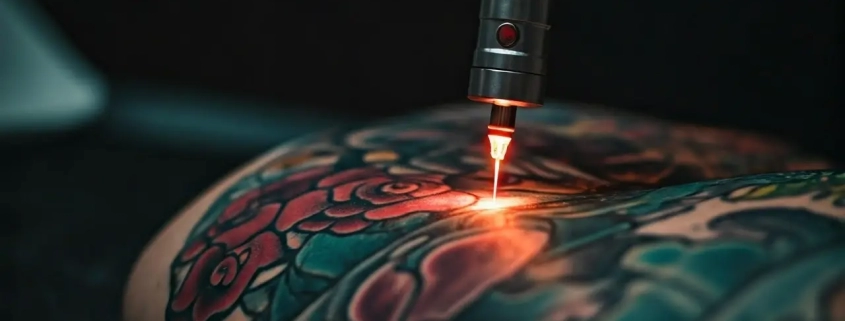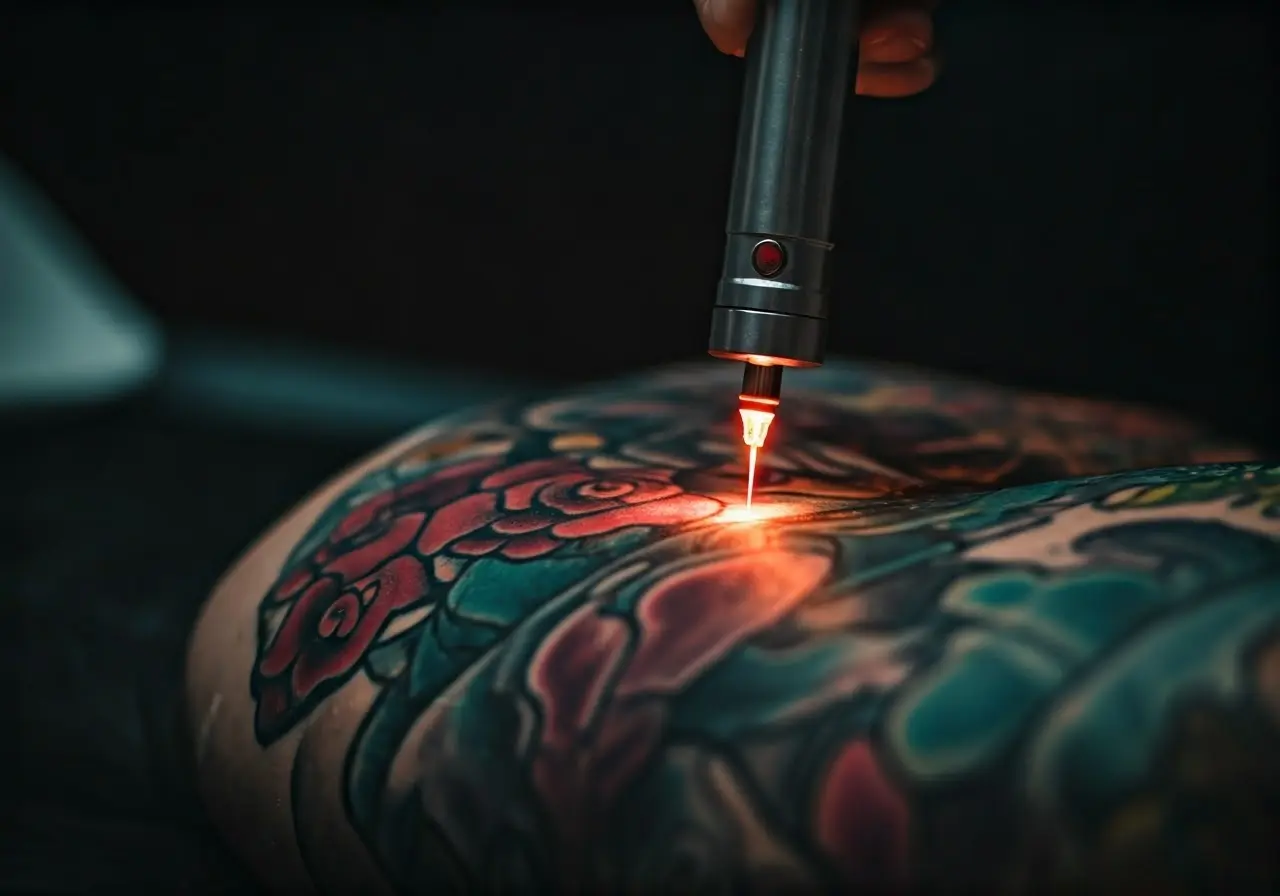8 Things to Consider Before Choosing Laser Tattoo Removal
Laser tattoo removal has become an increasingly sought-after solution for those looking to erase unwanted tattoos. However, before committing to this procedure, it’s crucial to understand the key considerations involved. This guide aims to demystify the process, providing clarity on important factors to ensure a confident decision.
1. Understanding the Science Behind Laser Removal
Before opting for laser tattoo removal, it’s essential to comprehend the scientific mechanics of the procedure. This involves understanding how lasers target tattoo pigments, breaking them down into smaller fragments that the body can naturally process. Lasers emit light at specific wavelengths which penetrate the top layers of skin. This light is absorbed by the tattoo’s pigment, causing it to shatter. Over time, the body’s immune system removes these fragments, gradually fading the tattoo with every session. Knowing this, patients should recognize that complete removal is a cumulative process and patience is key.
Each tattoo is unique, therefore laser removal must be adapted to its specific characteristics. For instance, professional tattoos tend to have more saturated ink that lies deeper in the skin, requiring more sessions for effective removal. Additionally, the laser’s wavelength is chosen based on the tattoo’s color, as different pigments absorb different wavelengths. Black and dark inks are easier to remove because they absorb all wavelengths, whereas lighter colors may require specialized lasers. Understanding this science forms a foundation for realistic expectations regarding laser tattoo removal.
2. Evaluating Skin Type and Tattoo Characteristics
Different skin types and tattoo characteristics can impact the effectiveness and safety of laser removal. Factors such as skin tone, tattoo size, ink quality, and colors should be assessed to tailor the procedure appropriately. Lighter skin tends to experience fewer complications, as there is less risk of pigment changes during treatment. Darker skin, however, may require a more cautious approach, using lasers that minimize damage to the surrounding skin. Moreover, tattoos with more ink density and larger size demand multiple sessions and may result in more noticeable side effects.
The age of the tattoo also plays a significant role; older tattoos generally fade more easily than newer ones since they’ve had more time to naturally break down. It’s essential to discuss these characteristics with a dermatologist or a certified tattoo removal specialist to craft a personalized treatment plan. By taking into account both skin type and tattoo specifics, the chances of successful removal improve substantially.
3. Considering the Number of Sessions Required
The number of sessions needed for complete removal varies from person to person. It depends on factors like tattoo age, density of the ink, and the body’s ability to heal and process the broken-down pigments Laser Mole Removal with Plexr Plasma. The procedure typically spans multiple sessions, spaced out over weeks or even months to allow sufficient healing time between treatments. Initially, it’s crucial to consult with a specialist to assess how many sessions might be needed realistically.
Moreover, the laser technology’s efficacy plays a pivotal role in determining session count, hence opting for a clinic equipped with advanced laser systems can potentially reduce the overall treatment period. Utilizing effective, up-to-date equipment combined with an experienced practitioner can streamline the removal process, achieving better results in fewer sessions.
4. Exploring Potential Side Effects and Risks
Like any medical procedure, laser tattoo removal comes with potential side effects and risks. Understanding common reactions such as redness, swelling, and even potential scarring will help prepare for post-treatment care. Short-term effects can include temporary darkening of the tattoo, blistering, and even pinpoint bleeding. These are generally temporary, subsiding in a few weeks.
Long-term side effects might include changes in skin texture or color, such as hyperpigmentation or hypopigmentation, particularly in individuals with darker skin. Choosing a reputable clinic with skilled professionals can significantly reduce these risks, as they can adjust the laser settings appropriately for each skin type and tattoo characteristic. Also, adhering to post-care instructions and keeping open communication with your provider helps manage side effects effectively.
5. Researching the Provider’s Expertise and Equipment
The skill and experience of the provider play a critical role in the outcome of laser tattoo removal. Equally important is the type of equipment used, which affects precision and safety. Ensuring that the provider is certified and uses advanced technology is essential. Look for clinics that have a strong track record in laser dermatology, and don’t hesitate to ask about their specific equipment and techniques Why More Orange County Residents are Opting for Laser Mole Removal Today.
Reading reviews and testimonials can also provide insights into a practitioner’s expertise and patient satisfaction levels. Consulting with multiple providers before deciding can help assess their knowledge and approach, ensuring that you choose someone who inspires confidence and has a clear plan tailored to your needs.
6. Weighing the Cost Considerations
Cost is a vital aspect to consider, as laser tattoo removal can be expensive depending on the number of sessions and geographic location. Budgeting for the full course of treatment and understanding the pricing structure is paramount. Providers may charge per session or offer payment plans, so exploring these options can help manage costs. It’s important to remember that higher pricing often correlates with newer technology and experienced practitioners, which can lead to better results and potentially fewer sessions.
Before committing, evaluate whether the cost aligns with the expertise and equipment quality of the provider. In some situations, paying slightly more might be worthwhile for increased safety and efficacy, reducing the chances of needing future corrective procedures.
7. Setting Realistic Expectations
It is crucial to set realistic expectations for the outcome of the procedure. Complete removal might not always be possible for every tattoo, and being informed on possible results will help manage expectations. Some tattoos may only partially fade, leaving behind a faint shadow or discoloration. Laser removal may also influence skin texture, making it slightly different from surrounding areas.
Discuss potential outcomes with your practitioner, taking into account variables such as tattoo age, ink type, and skin response to treatment. By being prepared for various scenarios, you can approach the procedure pragmatically, appreciating gradual improvements rather than absolute perfection.
8. Prioritizing Post-Treatment Care
Proper post-treatment care is essential for effective recovery and optimal results. This includes following the provider’s instructions for skin care, staying out of the sun, and maintaining a healthy lifestyle to aid the healing process. Using soothing ointments, avoiding picking scabs, and applying sunscreen diligently are simple yet effective steps in promoting healthy skin recovery.
Considering laser tattoo removal? Book a complimentary consultation with Dr. Laura Cho online at Bellatudo Skin and Wellness Center. You can also explore before and after results of happy Bellatudo Skin & Wellness Center patients on our Instagram page. Your journey towards clarity and confidence starts today!







